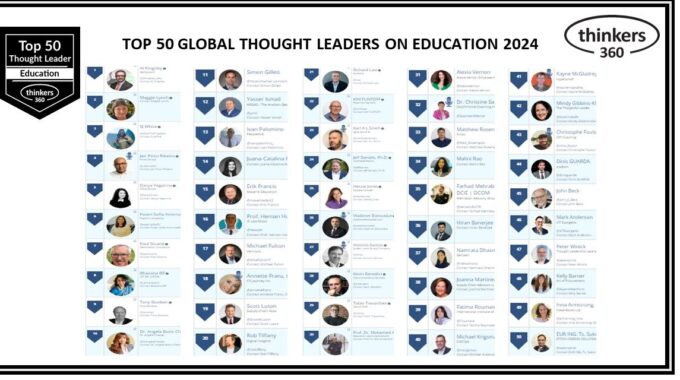(Note, this was transcribed using a transcription software and may not reflect the exact words used in the podcast)
Tom Poland: 0:09
Hello everyone, and a very warm welcome to yet another edition of the wonderful Marketing The Invisible. My name is Tom Poland, joined today by Peter Winick. Peter, good day, a very warm welcome, sir. Where are you hanging out?
Peter Winick: 0:20
I am in New York today.
Tom Poland: 0:22
New York, the Big Apple, city that never sleeps, and a whole lot of other clichés that we could throw at you, but I’m not going to for the sake of time. For those of you who don’t know Peter, he is an exceptional individual. I would describe, Peter, as being one of my guests who is at the top of his game. What is this game? Well, he’s the founder and CEO of Thought Leadership Leverage. And before you just think, ah, yeah, another thought leader bloke. Peter has been doing this for probably more decades than he cares to remember.
So, whenever you’ve been hearing about thought leadership of, probably just the latest cab off the ranks. Peter actually built the whole taxi fleet. Okay. So, listen up. For the last two decades, he’s helped individuals and organizations build and grow revenue streams, through designing and growing their thought leadership platforms, as well as acting as a guide and advisor for increasing businesses to business sales of thought leadership product.
Now, I happen to know and it’s not in Peters bio, that he has generated literally millions of dollars to some of his clients. So, it’s really, really, really worth listening to this, okay? He helps New York Times bestselling book authors, CEOs of public and privately held companies, academics at prestigious institutions such as Yale, Wharton, Dartmouth, and the London School of Business. Holy cow. Okay, so I’m impressed. I can’t wait to hear what you got to say. Our title today…
Peter Winick: 1:45
Thank you, good day.
Tom Poland: 1:46
No, no, no, don’t go just yet. You have an important part to come.
Our title today is, “How to Use Thought Leadership to Grow Your Business,” and Peter’s going to show us how to do that in just seven minutes. Peter, your time starts now. Question number one is, who is your ideal client?
Peter Winick: 2:02
So, several ideal clients, that could be authors, thought leaders, speakers, business leaders, consultants, professional services, at a high level.
I put them into two buckets, number one, people that are monetizing their content directly. So, I have expertise or content in leadership or management or resilience.
And I create solutions around that, book, speeches, video, etc.
The other, which is actually a really, really, really fast-growing part of the market is people that are using thought leadership not to sell it directly, but to stand out in a competitive market from the crowd. Primarily professional services, consulting, coaching, etc., where, listen, whoever you are, and whatever you do, we’re all being commoditized. So thought leadership, to me is the great equalizer.
It’s where personal branding ended, and it’s the next level. And I think more and more people are starting to use thought leadership not as a direct path to monetization but as a way to attract clients, stand out from the crowds, make your competitors look not as thoughtful.
Tom Poland: 2:57
Massive competitive advantage. So, question number two, six minutes left, we are right on schedule, what is the problem you solve for them?
Peter Winick: 3:06
So, there are a couple of problems that we solve.
Number one, so depending on where people are in their journey, sort of, how do I go about tackling this ball of thought leadership?
So, the way we do that is we, sort of, take it apart and we’re a bit old school from the standpoint in a good way, meaning, everything that we do starts with something strategic. So, what is your platform going to be and I’m not talking about technology but I’m talking about you’re going to be the X guy, Tom leads ology. Tom is all about leads.
I’m really, really clear. When I see things that come from Tom when I talked to Tom, he’s Mr. Online Leads, right? There are probably lots of other dimensions to his life. We don’t know about it; we don’t care about. And that’s what, so we are going to figure out, well, maybe not. He’s all leads all the time, right?
So, we want to figure out sort of what your platform is, who the markets you want to serve? How those markets consume content? Where are they and how do you connect with them? What’s your competitive advantage? So, there’s a suite of strategic things that we take people through before they go on there, you know, they start creating content because everybody wants to hit record and create cool stuff.
Tom Poland: 4:10
So, we’ve got this person who really does have some intellectual property, which is cutting edge. It’s working, but they don’t know how to scale it. They don’t know how to leverage it. They don’t know how to position themselves in the market.
They don’t know how to monetize it in a big, big way, which you can help them do that. So, question number three is this, that person I’ve just described, four and a half minutes left, what are some of the symptoms they’re going to be experiencing? Are they going to be lying awake at night worrying about how to do this?
Are they going to be just like, on the bones of the backside thinking there’s got to be a better way? What’s going on in their life, and their business?
Peter Winick: 4:44
Yeah, so a couple that I can think of right away is they’ve got, so one, as you said, they’ve got their expertise, so they know who they are. They know what they’re about, and it’s real. And now they’re putting it out into the marketplace in limited formats. Limited might be something like a book.
Limited might be something like a keynote. And what they’re doing is they’re stimulating and creating demand that they can’t fulfill. So, when people bring them in to speak, they fall in love with them as a speaker, and then never see them again.
Tom Poland: 5:12
The scalable back end to maximize their profit opportunity.
Peter Winick: 5:17
Right. So, one of the things that I think is the most amazing thing about the content business today, because by the way, words matter, and I think people need to start thinking about themselves as being in the content business.
Not calling themselves an author, a speaker, things that you might do. But ultimately, you’re in the business of making money from your ideas, from your content. So, I think that matters a lot.
Tom Poland: 5:38
Okay, we just got over three minutes left, and three questions left, so again, on track. People are going to find you eventually, hopefully, even though this interview, but before they find your services and go, “Oh my goodness, this is what I’ve been looking for,” they’re going to try stuff. And there’s, some of those things are going to be mistaken. So, what are some of the common mistakes that people make in trying to leverage off thought leadership before they find your solution?
Peter Winick: 6:01
Yeah, so it could be, “I’m going to write a book.” Okay, that’s lovely, but that’s like me waking up one day. And I, I haven’t ever run a race and saying, “Oh, the New York City marathons today, I think I’m going to go do that.” Like that’s not necessarily the right thing to do in the right sequence. The other thing is my brother in laws cousins, friends, the neighbor is really good on Twitter, so he’s going to be my social media guru. And I’m going to do Tick Tock.
Tom Poland: 6:26
The curse of convenience.
Peter Winick: 6:26
You’re deploying social media without any sort of underlying strategy. And just, you know, I think what happens is smart people confuse activity with productivity, right? So as long as I’m busy, as long as I’m doing things, it must be good. Well, not so much.
Tom Poland: 6:40
Well said. Okay. Two minutes left. Question number five, one value-free action that an audience member could take. It’s not going to solve the whole problem, but it’ll take the step in the right direction. Just one tip, really quick.
Peter Winick: 6:53
Yeah, one tip would be to be able to honestly answer the question of, “Why you?” Why would anyone listen to you? And I don’t mean that snarkly but like, why are you uniquely qualified to solve the problems that you’re claiming to solve to your audience today, based on your experience, based on your expertise, based on your education.
Tom Poland: 7:11
Yeah. And even better come up with eight reasons. Okay, eight answers to that question. 90 seconds left. Question number six, one valuable free resource that we want to direct people to this going to help them, it’s going to educate them. And I’m going to give them the answer because you’ve already given it to me, it’s thoughtleadershipleverage.com, www.thoughtleadershipleverage.com. And if you can’t spell it, then you’re probably not going to be an ideal client.
So, go to thoughtleadershipleverage.com and sign up for the newsletter. I just had a look at it before the interview, you’re going to receive a series of highly valuable insights and educational experiences. Peter, we got just under a minute left. Question number seven, what is the one question that I should have asked you, but didn’t?
Peter Winick: 7:55
The one question you should have asked me but didn’t is, maybe, what is the typical journey look like, you know?
Tom Poland: 8:03
That’d be interesting. Well, you’ve got 40 seconds to describe that journey, please.
Peter Winick: 8:07
Well, I’ll say, Tom, it’s a horrible question because there is no typical journey. It’s a little bit different for everybody. And the journey to some degree is what you want it to be. You can design the business and the life that you want with thought leadership, meaning, you want to be a speaker that’s on the road 100 nights a year, go for it. You want to be in the licensing business, licensing your content globally, go for it. You want to work directly with clients in a more intimate setting, in a consultant framework, that’s great.
There are so many ways that you can put it out there and it doesn’t have to depend on your unique skills, it doesn’t depend on your unique thinking, but we can put other people around it to help forth. Wow, this is, the pressure is on. Bang, the trap doors going to fall.
Tom Poland: 8:45
Peter, thank you so much for your time. It’s been absolutely brilliant. Cheers.
Peter Winick 8:49
Awesome. Thanks so much.
Tom Poland: 8:50
Thanks for checking out our Marketing The Invisible podcast. If you like what we’re doing here please head over to iTunes to subscribe, rate us, and leave us a review. It’s very much appreciated. And if you want to generate five fresh leads in just five hours then check out www.fivehourchallenge.com.


